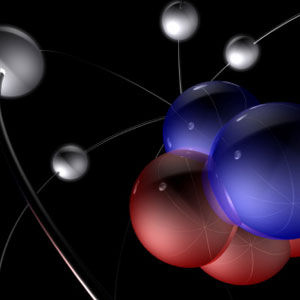Nuclear Physics

Coordinator Prof. Emanuele VARDACI
The section includes activities in nuclear physics and in physics applied to life and environmental sciences.
Research in nuclear physics ranges from the study of nuclear reactions under extreme conditions to the measurement of cross sections for reactions of astrophysical interest.
Research in physics for life and environmental sciences includes experimental studies of natural and artificial radioactivity and dosimetry for space missions, experimental development of new diagnostic imaging technologies and radiotherapy techniques, along with radiation dosimetry.
Researchers participate in international projects and in national ones within the frameworks of INFN CSN3 and CSN5.
Nuclear astrophysics focuses on nuclear reactions essential for understanding stellar evolution and nucleosynthesis. The Naples group is involved in experimental activities within CSN3 that adopt complementary approaches to directly study nuclear reactions of astrophysical interest.
These activities are carried out at major international nuclear physics laboratories: University of Notre Dame, TRIUMF, HZDR, Atomki, and the Oslo Cyclotron Laboratory. The group plays a recognized leadership role in international collaborations such as LUNA and ERNA.
The acquired expertise has enabled the development of cutting-edge detector systems: CaBS, an array for high-efficiency photon detection; SHADES, a neutron detector array for studying stellar neutron sources; GASTLY, an array of charged-particle detectors for probing nuclear structure and dynamics, especially alpha clustering.
Studies of nuclear reaction dynamics are carried out within the FORTE and NUCL-EX collaborations (CSN3). FORTE investigates heavy-ion–induced nuclear reactions (with stable and radioactive beams), and the optimization of production mechanisms for exotic nuclei in the "terra incognita" region of the nuclide chart. Focus is placed on multinucleon transfer, competition between fission and quasi-fission in the superheavy element region, and the formation and decay of light and intermediate-mass fissile nuclei. Activities are conducted at European laboratories of GSI, JYFL, CERN, IPNO, IFIN, and Italian laboratories of LNL and LNS. NUCL-EX focuses on the nuclear structure of light nuclei and reaction dynamics, with particular emphasis on isospin transport and the equation of state of nuclear matter under extreme conditions. Experiments employ multidetector systems such as FAZIA, INDRA, OSCAR, GARFIELD, and ATS, at international facilities installed at LNL, LNS, GANIL, TRIUMF, and FRIB laboratories.
In the domain of biomedical physics, research includes medical physics and radiation biophysics.In medical physics, the group develops AI methods for automated lesion detection in mammographic images, computational platforms for virtual clinical trials in diagnostic imaging, new preclinical radiotherapy techniques, and single-photon counting detectors (Timepix4 series) for medical imaging in clinical and space applications. In radiation biophysics, research addresses the biological effects of charged particles with applications in hadrontherapy and space radiation protection, including the interaction of hadrontherapy with immunotherapy, FLASH radiotherapy with heavy ions, image-guided hadrontherapy using high-energy radioactive ion beams, and the use of human stem-cell-derived organoids as model systems to assess the biological effectiveness of ion beams.
These studies are conducted at the Naples Radiation Biophysics Laboratory and at GSI. Further research is devoted to theragnostic, combining diagnostic and therapeutic uses of unconventional radioisotopes (e.g. Sc, Ga, Cu, Tb, V, Er, Tm). Precision cross-section measurements support the development of novel production methods. An external beam line at the medical cyclotron of the University of Bern is dedicated for this purpose.
The Environmental Physics group focuses on the detection and analysis of ionizing radiation aimed at optimizing exposure for the general public and workers, temporal radon monitoring in relation to seismic and volcanic phenomena, decommissioning of former nuclear power plants using zeolite-based materials, dosimetry evaluation for workers and patients in medical settings (radiology and radiotherapy) in the context of radiation protection, studies of cellular cytoskeleton responses to radiotherapy beams with a focus on nanoparticle uptake, and science communication and outreach activities aligned with citizen science initiatives.
The section provides course coverage for the Nuclear Physics and Biomedical Physics tracks of the Master's Degree in Physics.
LIST OF ACTIVITIES
- Nuclear Astrophysics
- Dynamics of Nuclear Reactions
- Biomedical Physics
- Environmental Physics